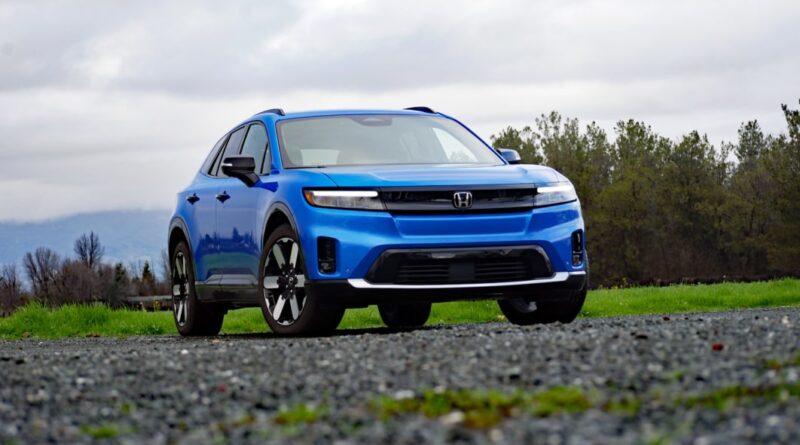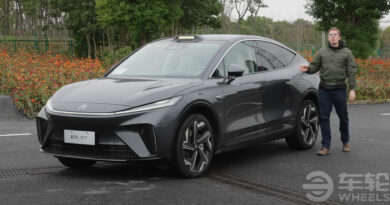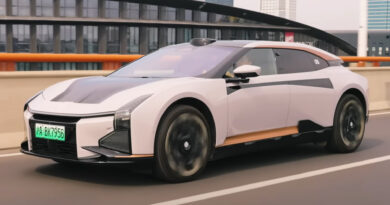2024 Honda Prologue First Drive Review: Do you care who made the volume knob?
Can you tell the difference between a Honda climate control knob and one made by General Motors? If so, do you care?
That’s ultimately what we’re talking about with the 2024 Honda Prologue. It looks like a Honda on the outside and it will be marketed as a Honda. Its creators say that great pains were taken to ensure it drives like a Honda. Underneath, however, the Prologue rides on GM’s Ultium electric platform that includes, among several vehicles, the similarly sized Chevrolet Blazer EV. Moreover, it’s built at the same GM production facility in Mexico as the Blazer, albeit on a separate line set to Honda’s unique standards, using parts from GM’s designers and suppliers. That’s where that question about the climate control knob comes in. To some (like car reviewers), it will be immediately obvious that the Prologue’s interior shares absolutely nothing with a CR-V apart from the Honda badge. To others? Well, that’s why I asked.
You see, it’s perfectly plausible and indeed likely, that those who cannot tell the difference will happily buy a Prologue, happy to finally take home a fully realized, widely available electric Honda, yet be totally unaware of its GM origins. Honda, the company, isn’t hiding that fact, but it’s also not exactly advertising it. Literally and figuratively. Honda dealers, on the other hand, seem even less likely to acknowledge the connection, be it by ignorance or obfuscation. This sets up the possibility of buyers not really knowing what they’re buying, and when we’re talking about fiercely loyal buyers like Honda’s, the situation for those buyers to feel a sense of bait-and-switch sure seems possible.
“I would feel scammed if after purchasing the vehicle I found out it’s a GM product,” said Gail Riswick, a four-time Honda/Acura owner who bought her first one in 1990 after one too many troublesome GM cars. She also happens to be my mother. After initially responding positively when I sent her an exterior photo, I asked what she would think if it was a GM underneath. Above was her response, which she followed with “I hope they are upfront about its origins.”
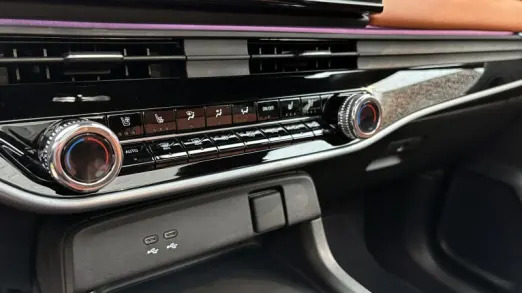
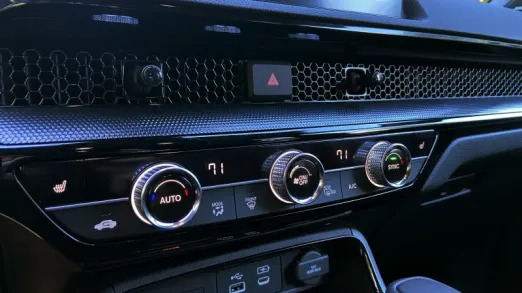
Can you tell the difference between these? Do you care?
Not all Honda loyalists will have a negative view of General Motors, but they’re also loyal for a reason. Furthermore, loyal car customers of any brand tend to get used to the way that brand’s cars operate. Get into anything else, and it’s usually not a positive experience. “Different” is interpreted as “bad.” Again, how are you feeling about those climate controls?
Honda Prologue product planner Quincy Tam says that his team anticipates customers most likely coming from the CR-V Hybrid and Passport, which he says tend to be purchased by those with a more open mind toward new automotive experiences. That is also the type of buyer who they anticipate will consider the Prologue, both for being an EV and for its GM origins. Assuming they know about it.
And let’s be very clear here, the GM Ultium platform is impressive. This isn’t rebadging an Isuzu Rodeo we’re talking about, nor a Toyota bZ4X/Subaru Solterra situation. Tam says that the Prologue is intended as a needed first step to bridge the gap between now and when Honda’s first in-house e: Architecture electric vehicle arrives in 2025. A prologue, if you will. That’s not actually much of a gap to bridge, really, and it’s unclear how long the Prologue will stick around. Seems likely to be shorter than the original Honda Passport, a rebadged Isuzu Rodeo that lasted two generations serving as Honda’s entry in the growing SUV market while Honda developed the CR-V and then Pilot. It was pretty easy to tell the OG Passport’s interior wasn’t related to an Accord’s, either.
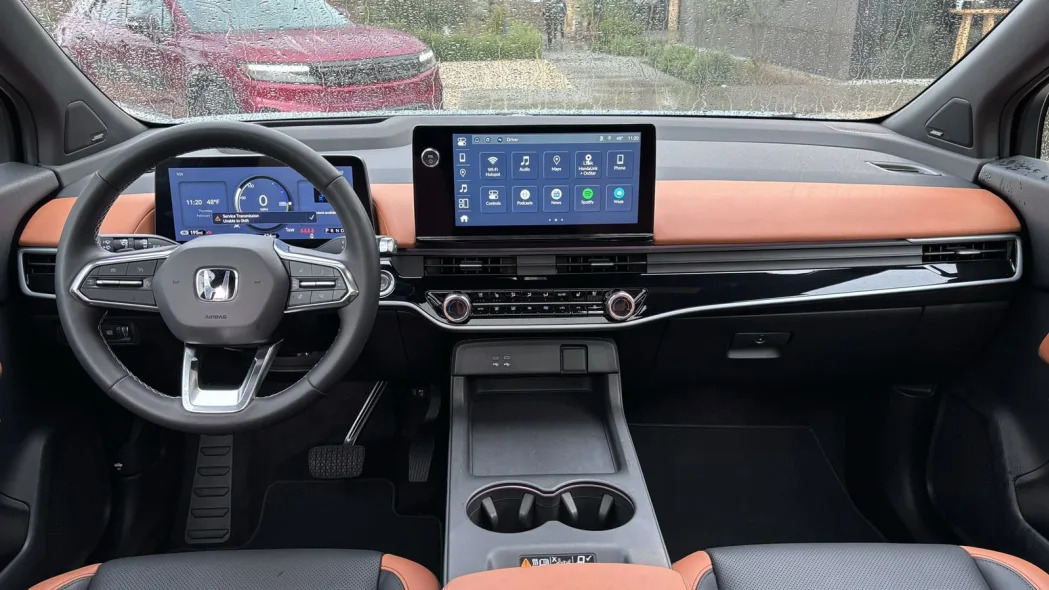

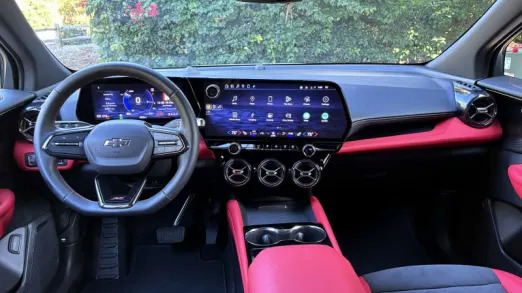
The range-topping interiors of the Honda Prologue, Honda CR-V and Chevrolet Blazer EV
Since we’re on the subject of the interior, it disappoints, and not necessarily because GM’s bits and pieces were used. According to Prologue development leader John Hwang, designers wanted to create a design consistent with the horizontal scheme found in the Civic, Accord, HR-V and CR-V. While there is certainly a resemblance as you can see above, complete with a thin line of trim connecting air vents, it comes across as incredibly plain and boring without the metallic honeycomb trim found in the “real” Hondas above. The climate controls, which are perfectly fine pieces that work well in a Blazer, also don’t provide the same extra pizzazz as the three climate knobs in the CR-V et al. that pleasingly click like an Audi’s. The plastic on the center console, meanwhile, looks and feels cheap, with a broad expanse of a tablet-size “bin” that doesn’t help things.
Without the Elite trim level’s available orange trim pictured above, it’s a really dreary place that doesn’t look like it belongs in the same conversation as a Hyundai Ioniq 5, Kia EV6, Nissan Ariya or, crucially, a Chevy Blazer EV. Although it shares the same switchgear, the Chevy has a dynamic, characterful cabin with higher-quality materials. And for the record, Tam says that Honda considered using its own parts for the interior, but was told by engineers that it would cost far too much, diminishing economies of scale.
In terms of space, the Prologue’s back seat offers vast legroom thanks to the sort of ample wheelbase we’ve come to expect from dedicated EV platforms. Rear headroom is cramped with the Touring and Elite’s panoramic sunroof, something that’s long plagued GM SUVs. All that wheelbase and back seat legroom also comes at the expense of cargo space: despite having midsize passenger room, the cargo area’s 25.2 cubic feet is indicative of a bigger subcompact. A CR-V hybrid has 36.3. To be fair, that figure is not much less than the Ioniq 5, EV6, etc.


So, Honda couldn’t pull off a Honda interior using GM parts. Could it achieve a Honda driving experience using GM parts? This is much harder to answer since electric vehicles are so intrinsically different than an internal combustion one. Even if the Prologue were 100% Honda, it wouldn’t drive like a CR-V, even a hybrid one that mostly relies on its electric motor. That said, Honda’s engineers seem to have struggled to use the GM hardware they were given, especially in regards to the steering. It lacks a crispness when turning in; there’s vagueness on-center, and then a subtle bit of resistance at times just after turn-in or mid-sweeper that almost feels like a lane-keeping aid is intervening. It was definitely off. The steering does not feel like a Honda and it doesn’t feel like a Blazer’s, either.
Acceleration is obviously an area where an EV is going to be different than any brand’s internal combustion norm, and it obviously is in this case, so let’s forego putting the Prologue up against the Best of VTEC list. As previously stated, the Prologue uses GM’s Ultium electric platform that includes various motor control units and some number of common battery packs (a Hummer EV has more, a Prologue has less). Much like a typical Honda SUV, front-wheel drive is standard, while all-wheel drive is optional on all but the range-topping, AWD-only Elite. Like the Blazer EV, all-wheel drive is achieved with a smaller traction motor that mostly reacts to slippage from the wheels up front (much like a typical all-wheel-drive system), and as such, the added performance is much less than “dual-motor” versions of various competitors. There’s nothing wrong with that – buyers who desire or need all-weather traction don’t need to pay for excess performance. The upcharge is $3,000 – more than the ICE norm of $1,500-$2,000 but less than the $3,500 or more of various EV competitors. It also must be noted that Honda is offering all trim levels and front-wheel drive from the get-go, while GM is trickling out Blazer trim levels with pricier ones arriving first.
The single-motor, front-drive Prologue produces 212 horsepower and 236 pound-feet of torque, which is considerably less than a Blazer and not that much different than a CR-V Hybrid (204 hp, 247 lb-ft) that assuredly weighs far less (Honda did not provide the Prologue’s curb weight). We only got a chance to drive the all-wheel-drive version, which does get a significant bump to 288 hp and 333 lb-ft even if not achieving Ioniq/EV6/Ariya levels of dual-motor spunk. The typical instant torque of an EV is obviously present, but passing power is underwhelming. If I were writing about a gas-powered car, I’d say there’s “nothing up high” in the rev band. There’s a clear difference between this and those various dual-motor competitors, and it does not portend well for the front-driver packing only 212 horses.
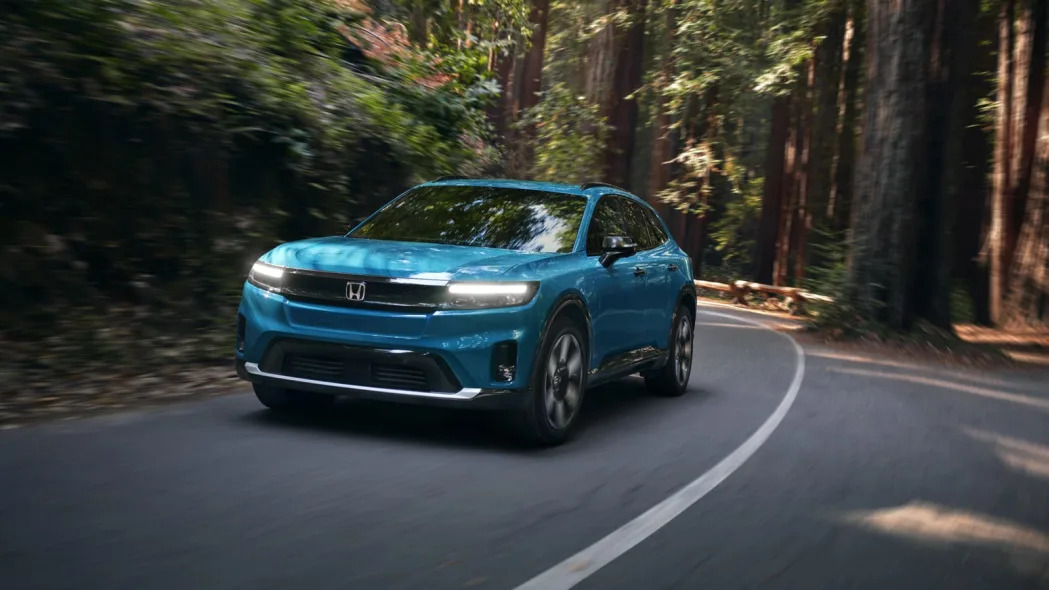
Big-time performance has rarely been the forte of consumer-oriented Hondas, though. Efficiency has, and in this area, the Prologue does not disappoint. Range with front-wheel drive is 296 miles, with all-wheel drive dropping to 281. The Elite, which has bigger wheels, drops to a still better-than-average 273 miles. It seems logical that the majority of consumers will care more about range and all-weather traction than performance, so in that way the Prologue succeeds. Max DC fast charging speed is just OK at 155 kilowatts.
Pricing starts at $48,795 for the front-drive EX, including the $1,395 destination charge. Honda also expects the Prologue will be eligible for the $7,500 federal tax credit, thereby providing a big advantage over Hyundai Group’s Korean-made contenders that are otherwise similarly priced. Pricing goes up to $59,295 for the loaded Elites we sampled and already declared to have an interior not in keeping with similarly priced electric vehicles. As such, cheaper Prologues are more appealing.
With the EX you still get the full array of driver assistance tech, including adaptive cruise control, plus the 11.3-inch touchscreen that runs a Honda reskin of GM’s Android Automotive-based interface. That means Google Maps is your native navigation system, and crucially, it will plan road trips including charging stops, and automatically pre-condition the battery for fast-charging should your destination be an EV charger. Honda’s tech interface is fine, but this is one area where the Prologue definitely comes out on top thanks to the GM parts bin. Ditto the standard diagonal wireless charging bin that’s far superior to Honda’s usual flat one (or non-existent one in many trim levels). The EX also gets an 11-inch digital instrument panel (with unique graphics), heated front seats, a power driver seat and a six-speaker stereo, but you’ll be doing without leather seats and wheel, a power passenger seat, the panoramic sunroof, roof rails and Bose audio that show up on the Touring ($53,095 FWD, $56,095 AWD).
I very much tried to give the Prologue the benefit of the doubt, accepting the concept that collaborating with GM and so extensively using its components was necessary to get an EV more quickly to market and to achieve realistic economies of scale. I also accept product planner Tam’s admission that Honda hasn’t experienced the serious issues that have stalled the Blazer EV’s launch. That all said, the Prologue underwhelms, as both a Honda and an EV. The GM bits and pieces will almost certainly be a problem for Honda’s faithful (if they’re aware of them), but they aren’t THE problem. It’s how those bits and pieces are utilized. Perhaps it’s not surprising that the Honda-GM collaboration is already dead.

